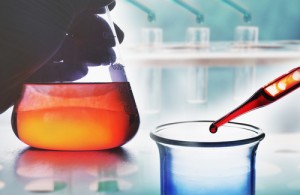 Chemical peels seem to have a bad rap as of late. It may be because people picture horrible lab accidents when they hear “chemical,” or they envision the skin being grated off at the sound of “peel.” Another possibility could be that everyone is simply enamoured with new laser technology. However, there is no need to fear chemical peels; they are not as dangerous as the name might lead you to believe. As for technology, chemical peels are also backed by solid science.
Chemical peels seem to have a bad rap as of late. It may be because people picture horrible lab accidents when they hear “chemical,” or they envision the skin being grated off at the sound of “peel.” Another possibility could be that everyone is simply enamoured with new laser technology. However, there is no need to fear chemical peels; they are not as dangerous as the name might lead you to believe. As for technology, chemical peels are also backed by solid science.
What Are Chemical Peels?
Chemical peels are designed to improve the appearance of your skin. They can treat fine lines, wrinkles, sun damage, age spots, and certain types of acne. A mild, medium, or moderate (depending on the intensity of treatment needed) chemical solution is applied to the skin. The solution helps exfoliate the skin to erase imperfections and improve skin tone and texture. Common ingredients for chemical peels include:
-
Glycolic Acid: This is among the mildest of chemical peel ingredients. It is considered to be natural because it is derived from sugar cane. As a mild peel that works on a superficial level, it provides mild results, making multiple treatments necessary.
-
Trichloroacetic Acid: This is an effective middle-ground peel ingredient. It is strong enough to remove fine wrinkles, but it doesn’t provide the same lasting results as deep-working peels.
-
Phenol Peel: This is an incredibly strong chemical peel. It works deep within the tissue layers to achieve the most dramatic results. The recovery period takes longer (about two weeks), but many patients say their results last for years.
How Do Chemical Peels Work?
Your skin’s health and quality is only as good as the cells making up the tissue. Dead skin cells and lack of collagen can negatively affect the appearance of your skin. As you age, dead skin cells can build up, creating acne and a dull skin tone. Your natural collagen production also begins to slow down. Chemical peels work by exfoliating the top layers of skin to remove dead cells. By slightly damaging the surface of your skin, the body is stimulated to produce new collagen cells to help in the healing process. The cells that remain behind once healing is complete create tighter, smoother skin. This process is known as cell turnover.
Maintaining Chemical Peel Results
Chemical peels come in varying strengths. Therefore, your results will last varying amounts of time depending on the treatment you underwent. If you want to prolong the effects of any chemical peel, it is important to maintain healthy skin care habits.
-
Stay hydrated: Consume the daily recommended amount of water, and apply a moisturizing skin cream after washing.
-
Nutrition: A good diet full of healthy vitamins and minerals can help maintain bright, clear skin.
-
Apply sunscreen: Sun damage is one of the leading causes of signs of aging. Always use sunscreen with at least SPF 30, and avoid direct sunlight when possible.
If you are considering a chemical peel treatment, schedule your consultation with Dr. Oliver & Dr. Jack today. Contact our office by calling 205-298-8660 or filling out our online contact form here.
